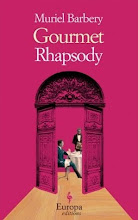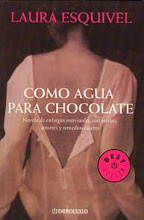The Crème of the Krémes in Budapest
Seeking the best of the city's smooth, buttery, flaky, eat-it-anytime pastries in its classic cafés
By ANDRÁS SZÁNTÓ
To know a Hungarian is to know someone who takes dessert very seriously.
Any respectable Hungarian meal ends with something buttery and sweet, preferably topped with a dollop of whipped cream. Christmas is impossible without beigli, a roulade of pastry with poppy seed or walnut filling. Delicacies like the decadent chestnut purée known as gesztenyepüré are as seasonal as heirloom tomatoes. At the beach, Hungarians line up for chocolate- and jam-filled crèpes, or palacsinta.
In the country's hedonistic capital of Budapest, locals keep score of favorite patisseries with the fervor many Americans reserve for sports teams. Cakes, strudels and pastries are consumed around the clock, during languorous conversations in cafés or on a quick break from work, at a counter, with a jolt of espresso.
Each of the city's venerable coffeehouses boasts a distinct cultural profile and network. The diminutive Müvész, near the opera house, has long been linked to stage artists. The vast, gilded New York is a haven for the literary crowd. Lukács Cukrászda, across from the University of Fine Arts, sees painters and sculptors. Each fills up daily with couples and friends digging into sweet concoctions. Dessert, for Hungarians, is the campfire.
Nothing embodies this more fully than the krémes: a quivering quadrangle of vanilla crème, sandwiched between layers of crisp mille-feuille and finished with a dusting of confectioner's sugar.
The krémes is dessert stripped to the essentials. It's usually consumed on its own, not after a meal. Best to order before noon, when cream and crust are both fresh, their contrasting textures clearly discernible.
Sadly, though, all is not well in the land of krémes. The traditional krémes, with its abstract restraint, is turning into a rarity, a victim of Westernization.
Growing up in downtown Budapest in the 1970s, I understood the distinction between basic krémes and francia krémes, a "French" variation with an extra layer of whipped cream and caramel icing on top. Then, as now, I saw these flourishes as overkill. But eager to satisfy modern tastes, today's pastry chefs are embellishing even further.
At the Gresham Restaurant in the luxurious Four Seasons Hotel, for example, what arrives at the table when you order a krémes is a multi-layered slab of crème brûlée in a pool of raspberry sauce. On the bill, it was listed as a "mille-feuille." It was tasty, but better suited to Paris than Budapest.
Moreover, some establishments are still resorting to shortcuts, a carryover from the days of state-owned restaurants that didn't care about quality. They use instant pudding instead of boiled cream that takes time to prepare, and cheap powdered eggs and milk. Even in Budapest, finding an authentic krémes requires some searching.
As with most Hungarians, my love of krémes goes deep. The family-owned pastry shop, or cukrászda, on the block where I grew up made excellent krémes. One day, when I was about 10, I ate four portions and promptly got sick. My krémes days were over—until my health-conscious American wife decided it was her favorite Hungarian food.
I recently took my 4-year-old son, Lex, from New York to Budapest, to continue the family tradition. Our mission: to find the best krémes in town. Armed with a sheet to grade "fluffiness," "crunchiness," "yumminess" (for Lex) and other quality indicators, we hit neighborhood cake shops and renowned coffee houses.
Each of the places we note has a distinctive way of balancing tradition and innovation. Some do take liberties with the classic form. But they all pride themselves on making krémes the old-fashioned way. Their pastries are well worth tasting—and some are truly sublime.
![[KREMES]](http://si.wsj.net/public/resources/images/OD-AL764_KREMES_G_20111028010708.jpg) András Szántó
András Szántó





